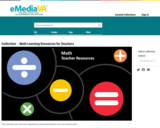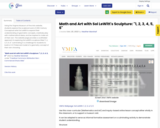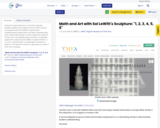
Just in Time Quick Check Order Angles of Triangles by Degree Measure Given Side Lengths
- Subject:
- Mathematics
- Measurement and Geometry
- Material Type:
- Assessment
- Provider:
- VDOE
- Author:
- VDOE
- Date Added:
- 10/07/2024

Just in Time Quick Check Order Angles of Triangles by Degree Measure Given Side Lengths

Just in Time Quick Check Practical Problems in Determining Whether a Triangle Exists

Just in Time Quick Check Practical Problems with Side Length of Triangles

Just in Time Quick Check Prove Two Triangles Congruent

Just in Time Quick Check Prove Triangles are Similar

Just in Time Quick Check Pythagorean Theorem and its Converse

Just in Time Quick Check Properties of Special Right Triangles

Just in Time Quick Check Trigonometric Ratios

Just in Time Quick Check Properties of Quadrilaterals

Just in Time Quick Check Shapes

Just in Time Quick Check Comparing Shapes

Just in Time Quick Check Constructions of a Perpendicular to a Given Line at a Given Point on the Line

This is a booklet containing 37 space science mathematical problems, several of which use authentic science data. The problems involve math skills such as unit conversions, geometry, trigonometry, algebra, graph analysis, vectors, scientific notation, and many others. Learners will use mathematics to explore science topics related to Earth's magnetic field, space weather, the Sun, and other related concepts. This booklet can be found on the Space Math@NASA website.

This collection has resources organized by grade level teachers can use to teach math.

Using the Virginia Museum of Fine Arts website, students explore the sculptural work of 20th Century Conceptual artist Sol LeWitt to expand their understanding of geometric concepts, creatively play with mathematical ideas, and be inspired to make art of their own.
The website page provides a scaffolded approach to exploring Sol LeWitt's sculpture titled "1, 2, 3, 4, 5, 6." culminating in a challenge for students to build a 3-D Tinkercad model of a geometry concept of their own choosing.

Using the Virginia Museum of Fine Arts website, students explore the sculptural work of 20th Century Conceptual artist Sol LeWitt to expand their understanding of geometric concepts, creatively play with mathematical ideas, and be inspired to make art of their own.
The website page provides a scaffolded approach to exploring Sol LeWitt's sculpture titled "1, 2, 3, 4, 5, 6." culminating in a challenge for students to build a 3-D Tinkercad model of a geometry concept of their own choosing.

Video description: Join NASA to learn more about solar eclipses, especially the awe-inspiring phenomenon of total eclipses. Find out about the unique geometry and the distances and sizes of the sun and moon as seen from Earth that allow us to witness the sun's corona or actually be in the path of totality. Video length: 7:15. NASA eClipsTM is a suite of online student-centered, standards-based resources that support instruction by increasing STEM literacy in formal and nonformal settings. These free digital and downloadable resources inform and engage students through NASA-inspired, real-world connections.NASA eClips Launchpad videos focus on NASA innovations and the technology that take us into the future. These segments support project-based and problem-based learning experiences in science, mathematics, and career and technical education classrooms.

Video Description: How does NASA test ideas, like the Mars Helicopter, before they are even built? Find out more about this revolutionary helicopter and how NASA uses mathematical modeling to turn complex ideas into solvable equations that help shape future missions. Video Length: 3:20.NASA eClipsTM is a suite of online student-centered, standards-based resources that support instruction by increasing STEM literacy in formal and nonformal settings. These free digital and downloadable resources inform and engage students through NASA-inspired, real-world connections.NASA eClips Real World segments (grades 6-8) connect classroom mathematics to 21st Century careers and innovations. They are designed for students to develop an appreciation for mathematics through real-world problem solving.

Video Description: Satellites are expensive to build and expensive to get into space. With all the changes in technology, is there a way to make satellites smaller? Find out just what NASA can pack into a 1U CubeSat, a satellite small enough to fit in your hand. Video Description: 3:24.NASA eClipsTM is a suite of online student-centered, standards-based resources that support instruction by increasing STEM literacy in formal and nonformal settings. These free digital and downloadable resources inform and engage students through NASA-inspired, real-world connections.NASA eClips Real World segments (grades 6-8) connect classroom mathematics to 21st Century careers and innovations. They are designed for students to develop an appreciation for mathematics through real-world problem solving.

Video Description: CubeSats are changing the way we collect information. They may be small, but these little satellites are helping us answer big questions. And using a swarm of CubeSats can give us simultaneous measurements without repeatedly sending commands to the satellite to tell it what to do.Video Length: 2:21.NASA eClipsTM is a suite of online student-centered, standards-based resources that support instruction by increasing STEM literacy in formal and nonformal settings. These free digital and downloadable resources inform and engage students through NASA-inspired, real-world connections.NASA eClips Real World segments (grades 6-8) connect classroom mathematics to 21st Century careers and innovations. They are designed for students to develop an appreciation for mathematics through real-world problem solving.